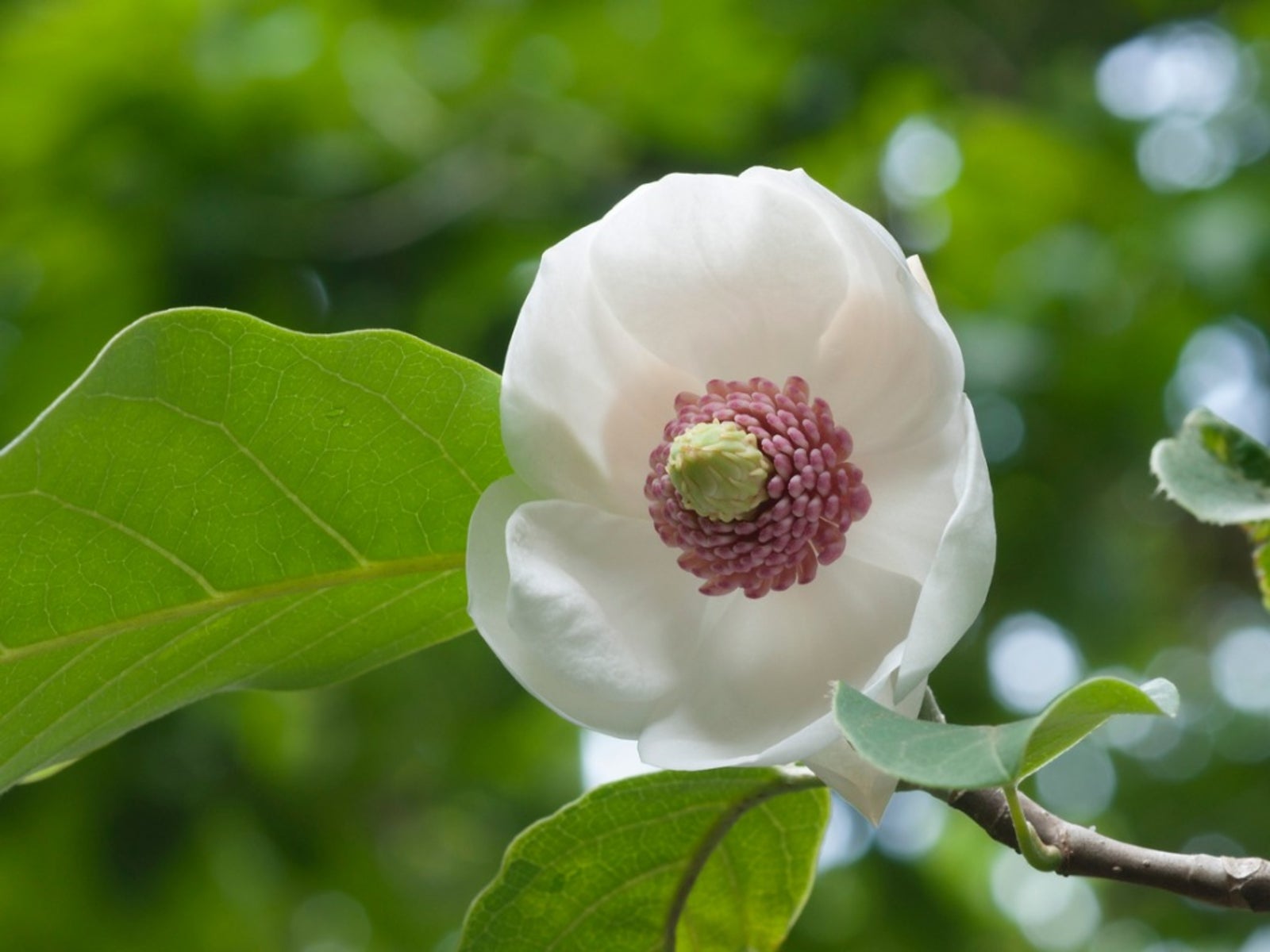Oyama Magnolia Tree Info – Learn About Oyama Magnolia Growing Requirements


This deciduous magnolia only grows to 15 feet tall (4.5 m.), so it can be thought of as the Oyama magnolia tree or the Oyama magnolia shrub. It’s a handsome plant bearing white, cup shaped flowers with rose colored stamens in the center, followed by bright fruit. If you are looking for a flowering shrub for a semi-shaded area, this is a great little magnolia variety to consider. Read on for all the Oyama magnolia information you’ll need to determine if this might be the plant for your garden.
Oyama Magnolia Tree
The Oyama magnolia tree (Magnolia sieboldii) is a large flowering shrub native to the understory of forests in Japan, China, and Korea. One of its common names is the Korean magnolia. It is a vase shaped shrub with gray bark, coarse textured oval leaves, and lovely flowers. The blossoms appear in late spring, as fragrant magnolia flowers that can grow to four inches (10 cm.) in diameter. They are followed by showy pink fruit with bright scarlet seeds.
Oyama Magnolia Information
If you are considering growing Oyama magnolia, you’ll need to know a little about the tree’s growth habit. This magnolia grows quite rapidly after transplant, shooting up 24 inches (60 cm.) or more in one year. It begins flowering while it is still young and grows occasional flowers during the summer, even after its normal six week season. The fruit are about the size of large eggs but a deep, bright pink. As they mature, they split open to reveal scarlet seeds. In autumn, the oblong leaves turn gold before they fall.
Oyama Magnolia Growing
Care for Korean magnolias is not difficult if sited correctly. One of the most important elements of care for this magnolia shrub is rich, well-drained soil. These magnolias prefer deep, moist, acidic soil that is supplemented with leaf mold or peat moss.
Oyama magnolia information tells us the tree does best when planted in USDA hardiness zones 6 through 9 in full sun or partial shade. Even in the correct zone this magnolia tree is sensitive. You’ll need to protect both the leaves and flowers from weather extremes such as hot sun, gusty winds, and winter frost. Regular care includes keeping the soil moist all year long. These trees can’t tolerate either dry or wet soil. If you mulch the root zone it will help to regulate soil temperature and moisture.
Gardening tips, videos, info and more delivered right to your inbox!
Sign up for the Gardening Know How newsletter today and receive a free copy of our e-book "How to Grow Delicious Tomatoes".

Teo Spengler is a master gardener and a docent at the San Francisco Botanical Garden, where she hosts public tours. She has studied horticulture and written about nature, trees, plants, and gardening for more than two decades. Her extended family includes some 30 houseplants and hundreds of outdoor plants, including 250 trees, which are her main passion. Spengler currently splits her life between San Francisco and the French Basque Country, though she was raised in Alaska, giving her experience of gardening in a range of climates.
-
 Looking For Plants To Give You The Soft And Fuzzies? Try These 5 Fuzzy Leaf Plant Options
Looking For Plants To Give You The Soft And Fuzzies? Try These 5 Fuzzy Leaf Plant OptionsLovers of texture, drama, silver foliage and tactile plants will adore these special sensory garden additions. These fuzzy leaf plant options will leave you all aglow
By Susan Albert
-
 Get Ready For A Summer Of Hummers! Grow These Full Sun Hummingbird Plants and Flowers
Get Ready For A Summer Of Hummers! Grow These Full Sun Hummingbird Plants and FlowersIf you’re lucky enough to enjoy a sunny backyard, make sure you are maxing out on your pollinator opportunities and grow these full sun hummingbird plants and flowers
By Tonya Barnett